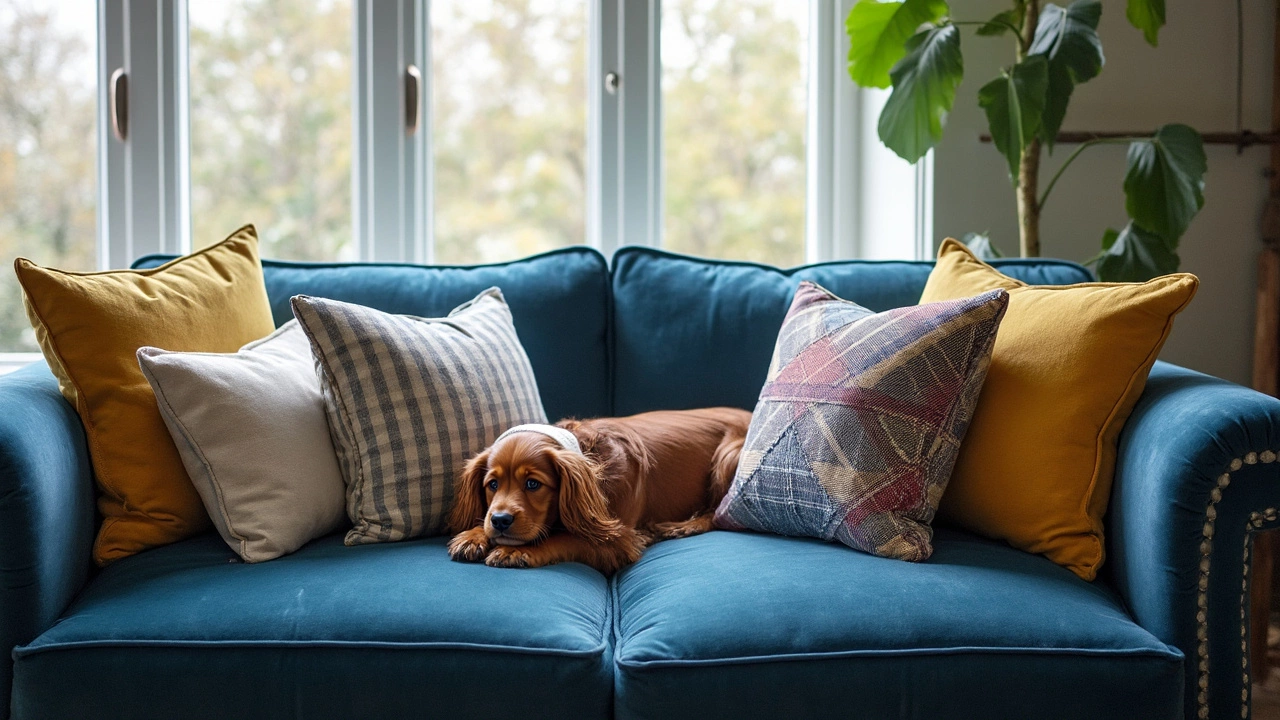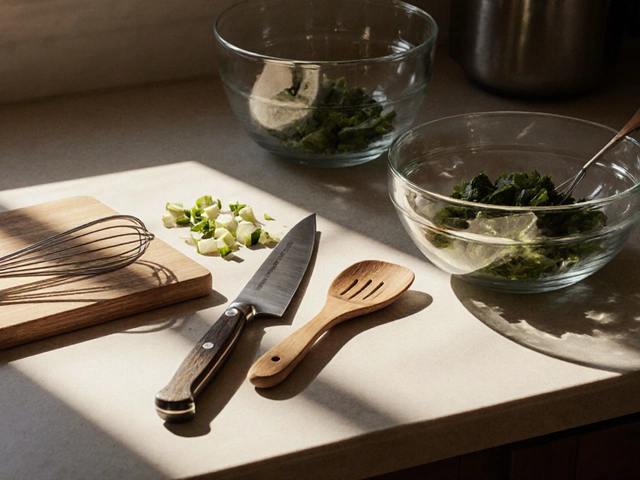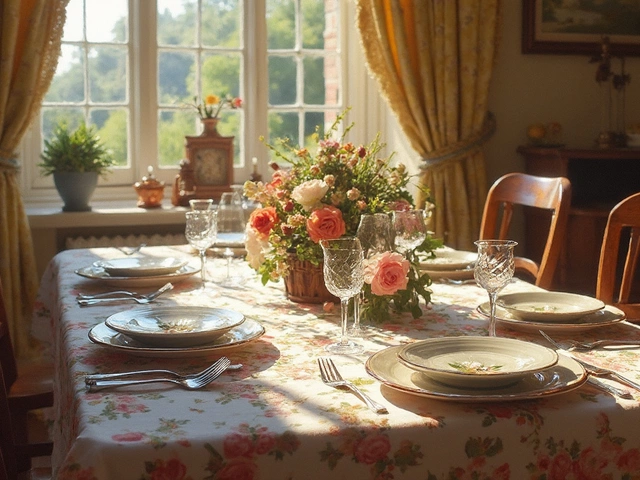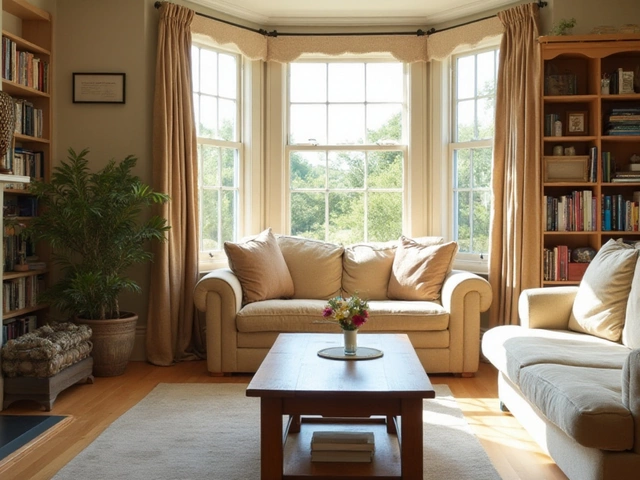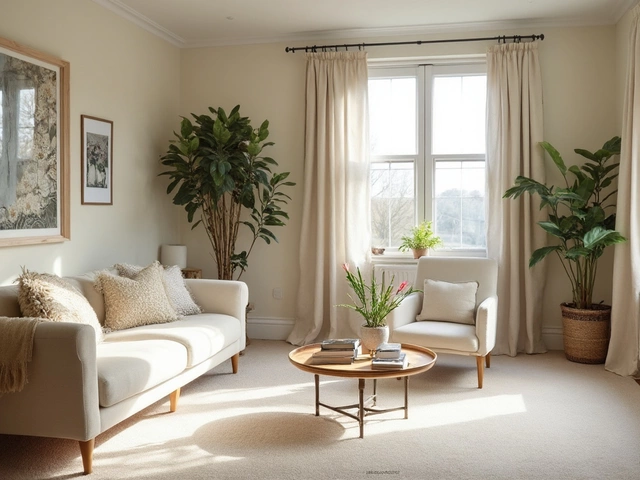Ever plopped down on a sofa and wondered if there’s such a thing as too many cushions—or too few? The number of cushions can make your whole living room vibe feel either pulled together or totally chaotic. And it’s not a one-size-fits-all answer. Different sofas—and different people—call for different cushion setups.
If you’re staring at your couch and feeling lost, you’re not alone. Most folks overthink this. Too many cushions and you’ll spend more time moving them around than actually relaxing. Not enough, and the place feels unfinished. There are real tricks for getting that cozy, stylish look without crowding your seat—or driving yourself (or your pets) nuts.
- Does the Number of Cushions Matter?
- The Rule of Odds and Evens
- Cushion Size and Shape Basics
- Mixing Colors, Patterns, and Textures
- Practical Tips for Everyday Living
Does the Number of Cushions Matter?
You might be thinking, “How much difference does it really make?” Turns out, the number of cushions can totally change how comfy and “put together” your living room feels. It’s not just about looks. Too many cushions can actually make your guests awkward or make lazy TV nights kind of cramped. Not having enough can make the whole area look unfinished, cold, or even a little sad.
Design pros often talk about balance. There’s no magic number, but research from interior design surveys shows most people prefer between three to five cushions on a standard 3-seater sofa. Sales data from home stores back this up—cushion packs usually come in 3s or 5s for a reason. You could say the "less is more" advice hits a wall if your sofa starts looking empty or swallowed up by cushion overload.
Here’s a quick comparison of average setups people choose across different sofa sizes:
| Sofa Size | Common Cushion Count | Visual Effect |
|---|---|---|
| 2-Seater | 2-3 | Simple, tidy, easy to manage |
| 3-Seater | 3-5 | Balanced, inviting, flexible for guests |
| Sectional or Corner | 5-7+ | Cozy, fuller look |
If you live with pets (like my cat Whiskers, who loves to knock them on the floor), fewer cushions usually means less daily cleanup. If your family is always fighting for space to sit, err on the side of fewer, bigger cushions for actual comfort. The number of cushions isn’t just about style—it’s about making the sofa work for your real life.
The Rule of Odds and Evens
Cushion arrangement gets way easier once you know about the odds vs. evens idea. Basically, if you want a casual, laid-back look, stick to odd numbers like three or five. If you’re into symmetry and a tidy vibe, go even—think two or four. It’s simple, but it actually works because our eyes notice patterns and balance way faster than we think.
Stylists use this trick all the time. Interior designers say that for a standard three-seater sofa, five cushions hit the sweet spot for that Pinterest-worthy look. For a smaller two-seater, three usually does the job. Sectionals? It depends, but breaking up cushions in groups of odd or even numbers for each corner brings instant order.
- Sofa shape matters—L-shaped and U-shaped sofas handle more cushions, but don’t go overboard. Most people find 5–7 total feels right.
- Odd numbers make the space feel more relaxed and inviting. This works great for family rooms or chill-out spaces.
- Evens are classy and clean. Two on each side of a large sofa makes the whole room look planned out.
Here’s a quick cheat sheet to what works for different sofa sizes:
| Sofa Size | Best Cushion Number | Style Vibe |
|---|---|---|
| 2-Seater | 2-3 | Simple, not crowded |
| 3-Seater | 4-5 | Balanced but homey |
| Sectional | 5-7+ | Spread out, fuller look |
Don’t sweat it if you end up one cushion over or under these numbers. Your style, your rules! The biggest takeaway: use odd numbers for relaxed, even ones for formal. Try both and see which one just clicks in your space.
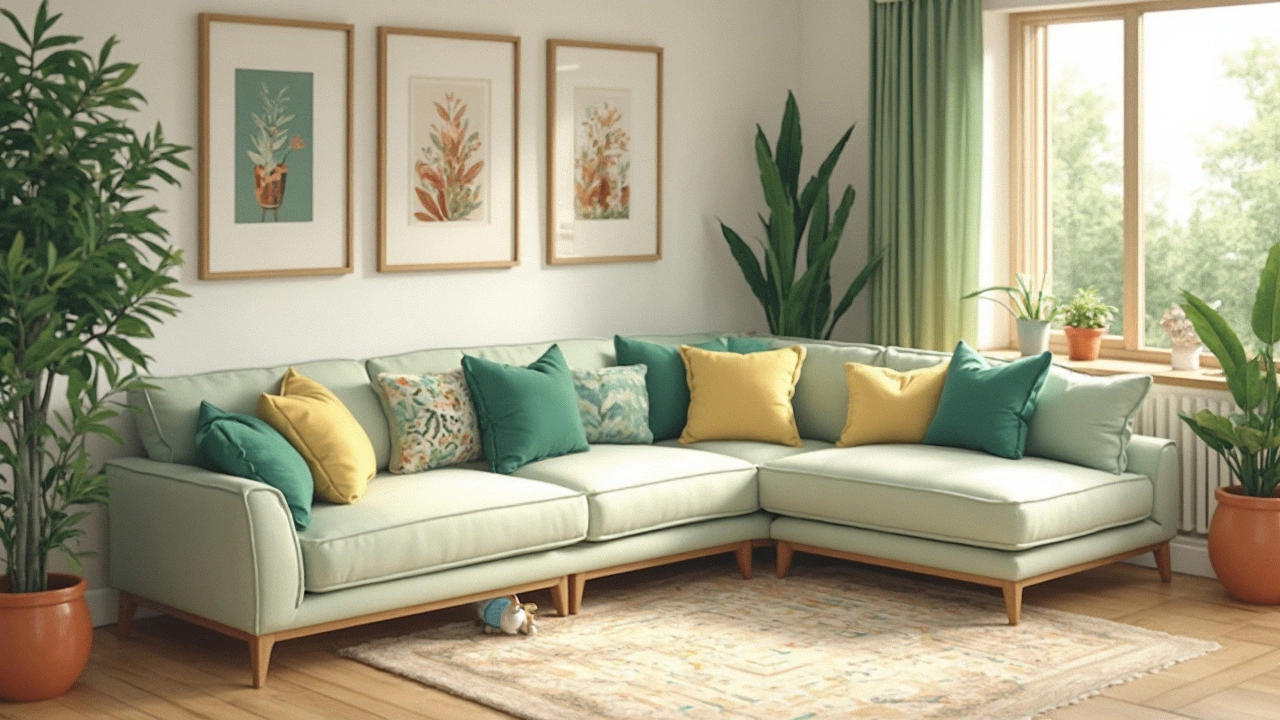
Cushion Size and Shape Basics
Here’s where most people mess up: grabbing a bunch of random cushions without thinking twice about size or shape. For most standard sofas, the “safe zone” is cushions around 18 or 20 inches square. These fill up space without crowding out anyone actually sitting down. For big sectionals, you can go as big as 22 or 24 inches. But anything much bigger just feels awkward—even if you’ve seen it on Instagram.
Mixing a few different sizes keeps things looking fresh. Try something like this:
- Two large squares at the back—these support your back and create a good base layer.
- One or two medium squares or rectangles in the middle—this gives some nice variety and depth.
- If you’re feeling playful, toss in a smaller lumbar or round cushion up front. They’re handy for naps and work for pets, too (my cat Whiskers steals mine relentlessly).
Most people stick with squares, but don’t sleep on rectangular (lumbar) cushions. They help break up the monotony, especially on longer sofas. Rounds bring in a softer touch and can loosen up a stuffy layout.
Just remember, your sofa shouldn’t look like a pillow pit. Every cushion should feel comfy and easy to move—nothing worse than constantly digging for a spot to sit. And if you live with pets or kids, smaller, machine-washable covers are way easier to toss in the wash when life gets messy.
Mixing Colors, Patterns, and Textures
This is the part where most people freeze up. Mixing colors and patterns on your cushions can bring your sofa to life—but done wrong, it can look like a jumble sale. The trick is sticking to a main color palette. Interior design pros usually pick two or three colors for all their cushions. Grab some inspo from artwork in the room, your rug, or even your curtains, so things don’t clash later.
When it comes to patterns, balance is key. Try combining one bold pattern, like a geometric or floral, with something quieter like stripes, dots, or a solid. Three different patterns is usually the max you want on most sofas. If you go beyond that, it gets real busy fast. For textures, it’s good to mix smoother fabrics—cotton, linen—with cozier ones like velvet or chunky knits. This is great if you want your couch to look welcoming, not stiff.
Here’s a handy cheat-sheet for mixing up your sofa cushion covers:
- Pick a base color that matches your sofa or walls.
- Add in 1-2 accent colors pulled from your room’s décor.
- Choose one patterned cushion (think: floral, graphic, checks).
- Balance with one or two solid or textured cushions.
- If your cushion count allows, use a small-scale print to tie things together, like a subtle dot or mini-stripe.
Even the number of colors and patterns matters. Studies from UCL’s Institute of Making say three colors is about most people’s comfort limit—after that, your brain sees visual overload and the room feels less relaxing.
| No. of Cushions | No. of Colors | No. of Patterns | No. of Textures |
|---|---|---|---|
| 2-3 | 1-2 | 1 | 1-2 |
| 4-5 | 2-3 | 2 | 2-3 |
| 6+ | 3 | 3 | 3+ |
Don’t forget practicality. If you have kids or pets (like my cat Whiskers, who thinks every cushion is a scratching post), pick machine-washable covers or stain-resistant fabrics. And if you ever feel the mix is off, just swap out one or two covers for a quick, budget-friendly fix.
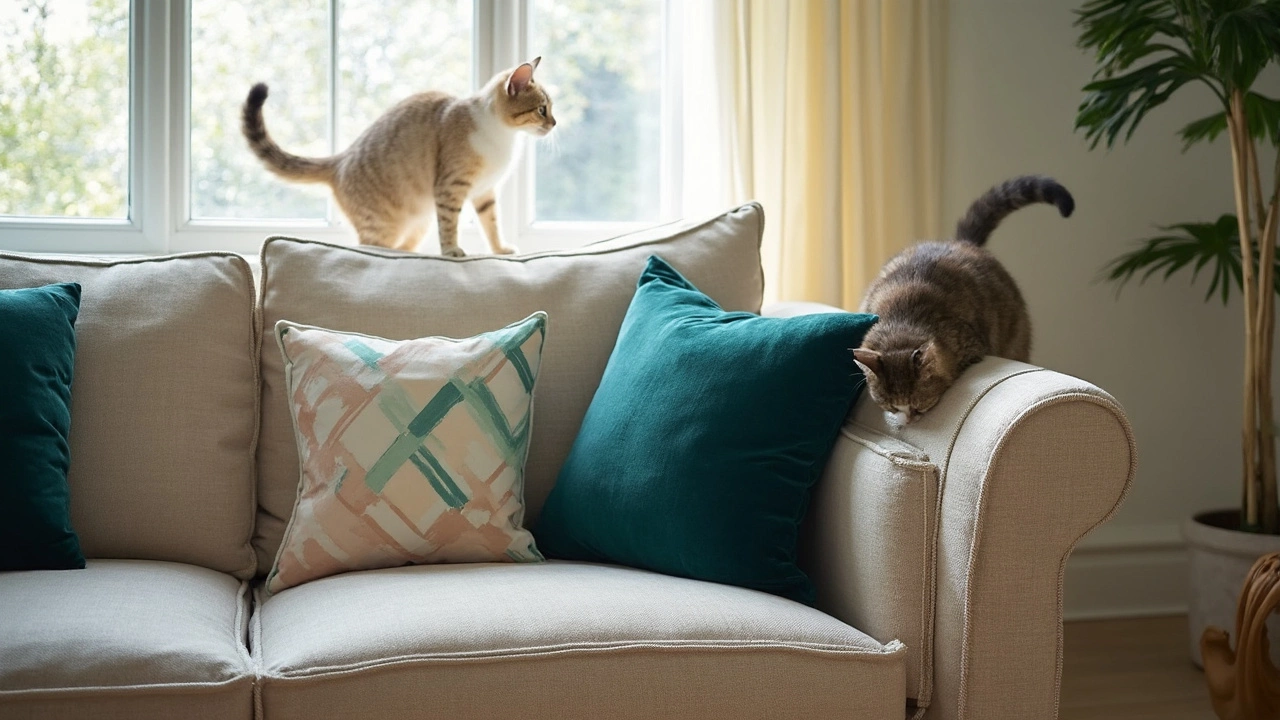
Practical Tips for Everyday Living
Life gets messy, especially on the sofa. You want your cushions to look good, but let’s be real—nobody wants to fuss every time someone sits down. Here are straight-up tips that work if your sofa doubles as a snack zone, pet park, or movie night base.
- Pick cushion covers you can unzip and toss in the wash. Most accidents—cat hair, coffee spills, you name it—clean up way easier this way. Look for labels like “machine washable” before buying.
- Stick to three or five cushions for a regular three-seater or sectional. This gives a balanced look but doesn’t overload the space. Too many is just annoying to move every time you sit.
- If you have kids or pets (like my cat Whiskers who treats cushions like his personal throne), go for darker shades or prints that hide fur and marks. Fabrics like microfiber or tightly woven cotton hold up better than silk or velvet when real life hits.
- Every couple of weeks, fluff up your cushions to keep them from looking limp. Rotate them around the sofa if you notice one spot getting squashed more often—that helps them wear evenly.
- Don’t stress about ‘imperfections.’ A little lived-in rumple actually makes your sofa feel more inviting. Style matters, but comfort wins for movie marathons.
Here’s a quick cheat sheet on cushion materials and how they hold up:
| Material | Easy Care | Toughness | Pet/Kid Friendly |
|---|---|---|---|
| Cotton | Yes | Good | Yes |
| Microfiber | Yes | Great | Yes |
| Velvet | No | Fair | No |
| Linen | No | Fair | No |
| Polyester blends | Yes | Great | Yes |
Remember: Function comes first. It’s not about having the ‘right’ number of cushions, but the right setup for you, your couch, and your day-to-day routine.

